Acta Chimica Sinica ›› 2019, Vol. 77 ›› Issue (11): 1099-1114.DOI: 10.6023/A19060240 Previous Articles Next Articles
Review
投稿日期:2019-07-01
发布日期:2019-08-23
通讯作者:
娄文勇
E-mail:wylou@scut.edu.cn
作者简介:梁珊, 博士, 2017年毕业于暨南大学, 获工学硕士学位, 2018年进入华南理工大学应用生物催化实验室攻读博士学位, 硕士期间曾赴加拿大萨斯喀彻温大学访问交流.研究方向为新型纳米材料固定化酶及其应用生物催化, 致力于CO2的高效捕获和转化|宗敏华, 教授, 博士生导师, 1988年博士毕业于华南理工大学, 1990~1991年在日本京都大学进修, 华南理工大学生物转化与营养工程团队负责人、广州市优秀女科技工作者, 兼任教育部化学与化工学科教学指导委员会委员, 享受国务院颁发的政府特殊津贴, 主要从事生物催化与转化方面的基础和应用研究工作|娄文勇, 教授, 博士生导师, 全国百篇优秀博士学位论文、国家优秀青年基金获得者, 入选广东省特支计划百千万工程领军人才及教育部新世纪优秀人才支持计划. 2005年毕业于华南理工大学生物化工专业, 获博士学位, 英国华威大学访问学者.现为华南理工大学食品科学与工程学院副院长, 研究方向为生物合成与应用生物催化, 主要聚焦于溶剂工程、生物催化剂的筛选与改造、酶固定化技术、生物质的高效利用与转化等方面的基础及应用研究工作
基金资助:
Liang Shan, Zong Minhua, Lou Wenyong*( )
)
Received:2019-07-01
Published:2019-08-23
Contact:
Lou Wenyong
E-mail:wylou@scut.edu.cn
Supported by:Share
Liang Shan, Zong Minhua, Lou Wenyong. Recent Advances in Enzymatic Catalysis for Preparation of High Value-Added Chemicals from Carbon Dioxide[J]. Acta Chimica Sinica, 2019, 77(11): 1099-1114.

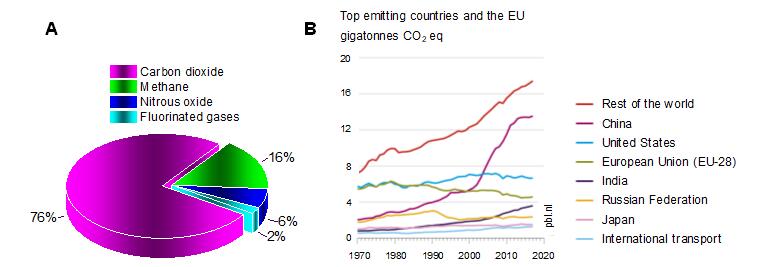
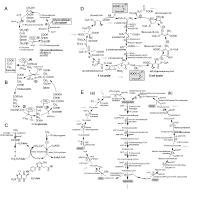

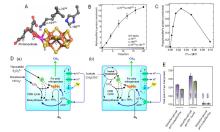

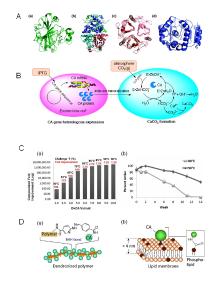

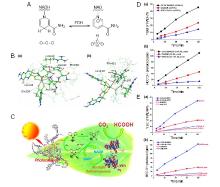

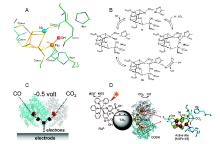

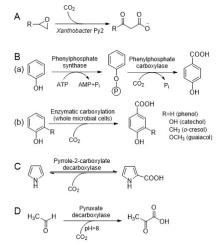


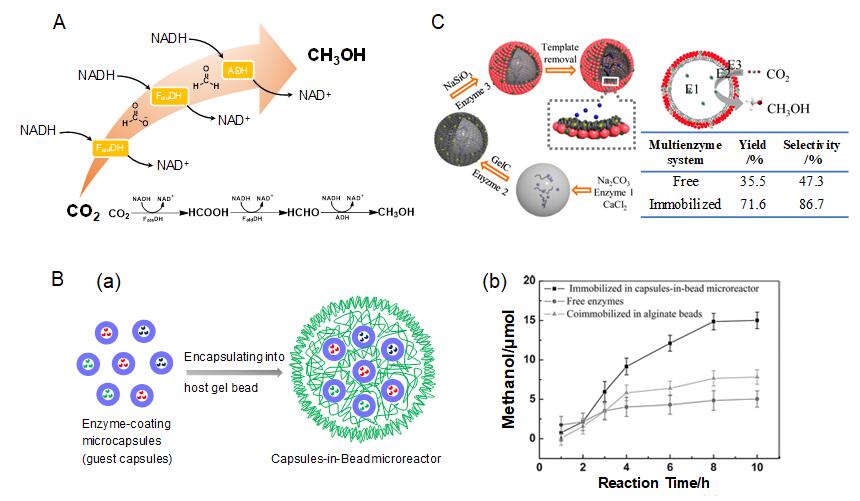
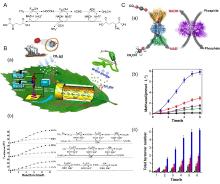

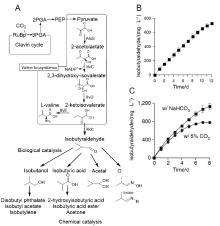

| [1] | Air Products and Chemicals, Inc., Carbon Dioxide Product Stewardship Summary, www.airproducts.com, 2018. |
| [2] |
Lei Z.; Xue Y.; Chen W.; Qiu W.; Zhang Y.; Horike S.; Tang L. Adv. Energy Mater. 2018, 8, 1801587.
doi: 10.1002/aenm.201801587 |
| [3] |
Zhang Z.; Muschiol J.; Huang Y.; Sigurdardóttir S. B.; von Solms N.; Daugaard A. E.; Wei J.; Luo J.; Xu B.-H.; Zhang S.; Pinelo M. Green Chem. 2018, 20, 4339.
doi: 10.1039/C8GC02230E |
| [4] |
Sultana S.; Chandra Sahoo P.; Martha S.; Parida K. RSC Adv. 2016, 6, 44170.
doi: 10.1039/C6RA05472B |
| [5] |
Chang S.-L.; Liang F.; Yao Y.-C.; Ma W.-H.; Yang B.; Dai Y.-N. Acta Chim. Sinica 2018, 76, 515.
doi: 10.11862/CJIC.2018.038 |
|
常 世磊; 梁 风; 姚 耀春; 马 文会; 杨 斌; 戴 永年 化学学报 2018, 76, 515.
doi: 10.11862/CJIC.2018.038 |
|
| [6] | Olivier J. G. J.; Peters J. A. H. W. Trends in global CO2 and total greenhouse gas emissions:2018 Report, PBL Netherlands Environmental Assessment Agency, The Hague 2018, 3125, pp. 4 6 |
| [7] |
Shi J.; Jiang Y.; Jiang Z.; Wang X.; Wang X.; Zhang S.; Han P.; Yang C. Chem. Soc. Rev. 2015, 44, 5981.
doi: 10.1039/C5CS00182J |
| [8] |
Zhang S.; Li X.-D.; He L.-N. Acta Chim. Sinica 2016, 74, 17
doi: 10.6023/A15090631 |
|
张 帅; 李 雪冬; 何 良年 化学学报 2016, 74, 17
doi: 10.6023/A15090631 |
|
| [9] |
Long N.; Lee J.; Koo K.-K.; Luis P.; Lee M. Energies 2017, 10, 473.
doi: 10.3390/en10040473 |
| [10] |
Chang X.; Wang T.; Yang P.; Zhang G.; Gong J. Adv. Mater. 2018, 31, 1804710
doi: 10.1002/adma.v31.31 |
| [11] |
Chen Z.; Wang X.; Liu L. Chem. Rec. 2019, 19, 1272.
doi: 10.1002/tcr.201800100 |
| [12] |
Kuramochi Y.; Ishitani O.; Ishida H. Coord. Chem. Rev. 2018, 373, 333.
doi: 10.1016/j.ccr.2017.11.023 |
| [13] | Aresta, M.; Dibenedetto, A.; Quaranta, E. In Reaction Mechanisms in Carbon Dioxide Conversion, Vol. 9, Eds.: Aresta, M.; Dibenedetto, A.; Quaranta, E., Springer Berlin Heidelberg, Berlin, Heidelberg, 2016, pp. 347~371. |
| [14] |
Mondal B.; Song J.; Neese F.; Ye S. Curr. Opin. Chem. Biol. 2015, 25, 103.
doi: 10.1016/j.cbpa.2014.12.022 |
| [15] |
Aresta M.; Quaranta E.; Liberio R.; Dileo C.; Tommasi I. Tetrahedron 1998, 54, 8841.
doi: 10.1016/S0040-4020(98)00475-X |
| [16] |
Obert R.; Dave B. C. J. Am. Chem. Soc. 1999, 121, 12192.
doi: 10.1021/ja991899r |
| [17] |
Marpani F.; Pinelo M.; Meyer A. S. Biochem. Eng. J. 2017, 127, 217.
doi: 10.1016/j.bej.2017.08.011 |
| [18] |
Fuchs G. Annu. Rev. Microbiol. 2011, 65, 631.
doi: 10.1146/annurev-micro-090110-102801 |
| [19] | Berg, I. A.; Kockelkorn, D.; Ramos-Vera, W. H.; Say, R.; Zarzycki, J.; Fuchs, G. In Carbon Dioxide as Chemical Feedstock, Vol. 3, Ed.: Aresta, M., WILEY-VCH Verlag GmbH & Co. KGaA, Weinheim, 2010, pp. 33~53. |
| [20] |
Alissandratos A.; Easton C. J. Beilstein J. Org. Chem. 2015, 11, 2370.
doi: 10.3762/bjoc.11.259 |
| [21] |
Erb T. J. Appl. Environ. Microbiol. 2011, 77, 8466.
doi: 10.1128/AEM.05702-11 |
| [22] |
Tabita F. R.; Hanson T. E.; Li H.; Satagopan S.; Singh J.; Chan S. Microbiol. Mol. Biol. Rev. 2007, 71, 576.
doi: 10.1128/MMBR.00015-07 |
| [23] |
Ljungdahl L. G.; Wood H. G. Annu. Rev. Microbiol. 1969, 23, 515.
doi: 10.1146/annurev.mi.23.100169.002503 |
| [24] | Ragsdale, S. W.; Kumar, M.; Seravalli, J.; Qiu, D.; Spiro, T. D. In Microbial Growth on C1 Compounds, Eds.: Lidstrom, M. E.; Tabita, F. R., Springer, Dordrecht, 1996, pp. 191~196. |
| [25] |
Ragsdale S. W.; Pierce E. Biochim. Biophys. Acta 2008, 1784, 1873.
doi: 10.1016/j.bbapap.2008.08.012 |
| [26] |
Gencic S.; Duin E. C.; Grahame D. A. J. Biol. Chem. 2010, 285, 15450.
doi: 10.1074/jbc.M109.080994 |
| [27] | Wang H.-J.; Ni J.; Zhang Y.; Zhang L.; Xin Y.-Y. Microbiol. China 2013, 40, 304 |
| 王 洪杰; 倪 俊; 张 怡; 张 玲; 辛 越勇 微生物学报 2013, 40, 304 | |
| [28] |
Scherf U.; Buckel W. Eur. J. Biochem. 1993, 215, 421.
doi: 10.1111/j.1432-1033.1993.tb18049.x |
| [29] |
Berg I. A.; Kockelkorn D.; Buckel W.; Fuchs G. Science 2007, 318, 1782.
doi: 10.1126/science.1149976 |
| [30] |
Ishii M.; Miyake T.; Satoh T.; Sugiyama H.; Oshima Y.; Kodama T.; Igarashi Y. Arch. Microbiol. 1996, 166, 368.
doi: 10.1007/BF01682981 |
| [31] |
Zarzycki J.; Brecht V.; Müller M.; Fuchs G. Proc. Natl. Acad. Sci. U. S. A. 2009, 106, 21317.
doi: 10.1073/pnas.0908356106 |
| [32] |
Patel H. M.; Kraszewski J. L.; Mukhopadhyay B. J. Bacteriol. 2004, 186, 5129.
doi: 10.1128/JB.186.15.5129-5137.2004 |
| [33] |
Burgess B. K.; Lowe D. J. Chem. Rev. 1996, 96, 2983.
doi: 10.1021/cr950055x |
| [34] |
Shah V. K.; Brill W. J. Proc. Natl. Acad. Sci. U. S.A. 1977, 74, 3249.
doi: 10.1073/pnas.74.8.3249 |
| [35] | Yang, Z.-Y.; Danyal, K.; Seefeldt, L. C. In Nitrogen Fixation. Methods in Molecular Biology (Methods and Protocols), Vol. 766, Ed.: Ribbe, M. W., Humana Press, Heidelberg, 2011, pp. 9~29. |
| [36] | Rivera-Ortiz J. M.; Burris R. H. J. Bacteriol. 1975, 123, 537 |
| [37] |
Lee C. C.; Hu Y.; Ribbe M. W. Science 2010, 329, 642.
doi: 10.1126/science.1191455 |
| [38] |
Hu Y.; Lee C. C.; Ribbe M. W. Science 2011, 333, 753.
doi: 10.1126/science.1206883 |
| [39] |
Yang Z.-Y.; Moure V. R.; Dean D. R.; Seefeldt L. C. Proc. Natl. Acad. Sci. U. S. A. 2012, 109, 19644.
doi: 10.1073/pnas.1213159109 |
| [40] |
Seefeldt L. C.; Rasche M. E.; Ensign S. A. Biochemistry 1995, 34, 5382.
doi: 10.1021/bi00016a009 |
| [41] |
Zheng Y.; Harris D. F.; Yu Z.; Fu Y.; Poudel S.; Ledbetter R. N.; Fixen K. R.; Yang Z.-Y.; Boyd E. S.; Lidstrom M. E.; Seefeldt L. C.; Harwood C. S. Nat. Microbiol. 2018, 3, 281.
doi: 10.1038/s41564-017-0091-5 |
| [42] |
Rebelein J. G.; Stiebritz M. T.; Lee C. C.; Hu Y. Nat. Chem. Biol. 2016, 13, 147
doi: 10.1038/nchembio.2245 |
| [43] |
Khadka N.; Dean D. R.; Smith D.; Hoffman B. M.; Raugei S.; Seefeldt L. C. Inorg. Chem. 2016, 55, 8321.
doi: 10.1021/acs.inorgchem.6b00388 |
| [44] | Lindskog S. Inorg. Chim. Acta 1983, 79, 36 |
| [45] |
Savile C. K.; Lalonde J. J. Curr. Opin. Biotechnol. 2011, 22, 818.
doi: 10.1016/j.copbio.2011.06.006 |
| [46] |
Smith K. S.; Jakubzick C.; Whittam T. S.; Ferry J. G. Proc. Natl. Acad. Sci. U. S. A. 1999, 96, 15184.
doi: 10.1073/pnas.96.26.15184 |
| [47] | Cai L.-X.; Chu Y.-M.; Zhang G.-Y. Chin. J. Biotech. 2019, 31, 1 |
| 蔡 丽希; 楚 云猛; 张 光亚 生物工程学报 2019, 31, 1 | |
| [48] |
Lehtonen J.; Shen B.; Vihinen M.; Casini A.; Scozzafava A.; Supuran C.; Parkkila A.-K.; Saarnio J.; Kivel A. J.; Waheed A.; Sly W.; Parkkila S. J. Biol. Chem. 2004, 279, 2719.
doi: 10.1074/jbc.M308984200 |
| [49] |
Loferer M. J.; Tautermann C. S.; Loeffler H. H.; Liedl K. R. J. Am. Chem. Soc. 2003, 125, 8921.
doi: 10.1021/ja035072f |
| [50] |
Shekh A.; Kannan K.; Mudliar N. S.; Yadav R.; Fulke A.; Sivanesan S. d.; Chakrabarti T. Crit. Rev. Environ. Sci. Technol. 2011, 42, 1419
doi: 10.1080/10643389.2011.556884 |
| [51] |
Bond G. M.; Stringer J.; Brandvold D. K.; Simsek F. A.; Medina M.-G.; Egeland G. Energy Fuels 2001, 15, 309.
doi: 10.1021/ef000246p |
| [52] |
Yadav R. R.; Krishnamurthi K.; Mudliar S. N.; Devi S. S.; Naoghare P. K.; Bafana A.; Chakrabarti T. J. Basic Microbiol. 2014, 54, 472.
doi: 10.1002/jobm.201300849 |
| [53] |
Mirjafari P.; Asghari K.; Mahinpey N. Ind. Eng. Chem. Res. 2007, 46, 921.
doi: 10.1021/ie060287u |
| [54] |
Xiao L.; Lian B. Carbonates Evaporites 2016, 31, 39.
doi: 10.1007/s13146-015-0239-4 |
| [55] |
McQ Gould S.; Tawfik D. Biochemistry 2005, 44, 5444.
doi: 10.1021/bi0475471 |
| [56] |
Alvizo O.; Nguyen L. J.; Savile C. K.; Bresson J. A.; Lakhapatri S. L.; Solis E. O. P.; Fox R. J.; Broering J. M.; Benoit M. R.; Zimmerman S. A.; Novick S. J.; Liang J.; Lalonde J. J. Proc. Natl. Acad. Sci. U. S. A. 2014, 111, 16436.
doi: 10.1073/pnas.1411461111 |
| [57] |
Yoshimoto M.; Walde P. World J. Microbiol. Biotechnol. 2018, 34, 151.
doi: 10.1007/s11274-018-2536-2 |
| [58] | Liu W.-F.; Wei L.-N. J. Mol. Catal. 2016, 30, 182 |
| 刘 文芳; 魏 利娜 分子催化 2016, 30, 182 | |
| [59] |
Yoshimoto M.; Schweizer T.; Rathlef M.; Pleij T.; Walde P. ACS Omega 2018, 3, 10391.
doi: 10.1021/acsomega.8b01517 |
| [60] |
Maeshima K.; Yoshimoto M. Enzyme Microb. Technol. 2017, 105, 9.
doi: 10.1016/j.enzmictec.2017.06.002 |
| [61] |
Cui J.-D.; Li Y.; Ji X.-Y.; Bian H.-J.; Zhang Y.-F.; Su Z.-G.; Ma G.-H.; Zhang S.-P. Chem. J. Chin. Univ. 2014, 35, 1999.
doi: 10.7503/cjcu20140059 |
|
崔 建东; 李 莹; 姬 晓元; 边 红杰; 张 羽飞; 苏 志国; 马 光辉; 张 松平 高等学校化学学报 2014, 35, 1999.
doi: 10.7503/cjcu20140059 |
|
| [62] |
Bulushev D. A.; Ross J. R. H. ChemSusChem 2018, 11, 821.
doi: 10.1002/cssc.201702075 |
| [63] |
Kawanami H.; Himeda Y.; Laurenczy G. Adv. Inorg. Chem. 2017, 70, 395.
doi: 10.1016/bs.adioch.2017.04.002 |
| [64] |
Castillo R.; Oliva M.; Martí S.; Moliner V. J. Phys. Chem. B 2008, 112, 10012.
doi: 10.1021/jp8025896 |
| [65] |
Neuhauser W.; Steininger M.; Haltrich D.; Kulbe K. D.; Nidetzky B. Biotechnol. Bioeng. 1998, 60, 277.
doi: 10.1002/(SICI)1097-0290(19981105)60:3<277::AID-BIT2>3.0.CO;2-E |
| [66] |
Dong G.; Ryde U. J. Biol. Inorg. Chem. 2018, 23, 1243.
doi: 10.1007/s00775-018-1608-y |
| [67] |
Boyington J. C.; Gladyshev V. N.; Khangulov S. V.; Stadtman T. C.; Sun P. D. Science 1997, 275, 1305.
doi: 10.1126/science.275.5304.1305 |
| [68] |
Schrapers P.; Hartmann T.; Kositzki R.; Dau H.; Reschke S.; Schulzke C.; Leimkühler S.; Haumann M. Inorg. Chem. 2015, 54, 3260.
doi: 10.1021/ic502880y |
| [69] |
Mota C. S.; Rivas M. G.; Brondino C. D.; Moura I.; Moura J. J. G.; González P. J.; Cerqueira N. M. F. S. A. J. Biol. Inorg. Chem. 2011, 16, 1255.
doi: 10.1007/s00775-011-0813-8 |
| [70] |
Dobbek H. Coord. Chem. Rev. 2011, 255, 1104.
doi: 10.1016/j.ccr.2010.11.017 |
| [71] |
Parkinson B. A.; Weaver P. F. Nature 1984, 309, 148.
doi: 10.1038/309148a0 |
| [72] |
Lu Y.; Jiang Z.-Y.; Xu S.-W.; Wu H. Catal. Today 2006, 115, 263.
doi: 10.1016/j.cattod.2006.02.056 |
| [73] |
Yadav R. K.; Baeg J.-O.; Oh G. H.; Park N.-J.; Kong K.-j.; Kim J.; Hwang D. W.; Biswas S. K. J. Am. Chem. Soc. 2012, 134, 11455.
doi: 10.1021/ja3009902 |
| [74] |
Choe H.; Joo J. C.; Cho D. H.; Kim M. H.; Lee S. H.; Jung K. D.; Kim Y. H. PLoS One 2014, 9, e103111.
doi: 10.1371/journal.pone.0103111 |
| [75] |
Yadav R. K.; Baeg J.-O.; Kumar A.; Kong K.-j.; Oh G. H.; Park N.-J. J. Mater. Chem. A 2014, 2, 5068.
doi: 10.1039/c3ta14442a |
| [76] |
Woolerton T. W.; Sheard S.; Reisner E.; Pierce E.; Ragsdale S. W.; Armstrong F. A. J. Am. Chem. Soc. 2010, 132, 2132.
doi: 10.1021/ja910091z |
| [77] |
Xu C.-Y.; Lin J.-Y.; Pan F.-Q.; Den B.-W.; Wang Z.-H.; Zhou J.-H.; Chen Y.; Ma J.-C.; Gu Z.-E.; Zhang Y.-W. Acta Chim. Sinica 2017, 75, 699.
doi: 10.11862/CJIC.2017.051 |
|
许 辰宇; 林 伽毅; 潘 富强; 邓 博文; 王 智化; 周 俊虎; 陈 云; 马 京程; 顾 志恩; 张 彦威 化学学报 2017, 75, 699.
doi: 10.11862/CJIC.2017.051 |
|
| [78] | Jeoung, J.-H.; Martins, B. M.; Dobbek, H. In Metalloproteins: Methods and Protocols, Vol. 3, Ed.: Hu, Y., Springer, New York, 2019, pp. 37~54. |
| [79] |
Appel A. M.; Bercaw J. E.; Bocarsly A. B.; Dobbek H.; DuBois D. L.; Dupuis M.; Ferry J. G.; Fujita E.; Hille R.; Kenis P. J. A.; Kerfeld C. A.; Morris R. H.; Peden C. H. F.; Portis A. R.; Ragsdale S. W.; Rauchfuss T. B.; Reek J. N. H.; Seefeldt L. C.; Thauer R. K.; Waldrop G. L. Chem. Rev. 2013, 113, 6621.
doi: 10.1021/cr300463y |
| [80] |
Parkin A.; Seravalli J.; Vincent K. A.; Ragsdale S. W.; Armstrong F. A. J. Am. Chem. Soc. 2007, 129, 10328.
doi: 10.1021/ja073643o |
| [81] |
Jeoung J.-H.; Dobbek H. Science 2007, 318, 1461.
doi: 10.1126/science.1148481 |
| [82] |
Miyazaki S.; Koga Y.; Matsumoto T.; Matsubara K. Chem. Commun. 2010, 46, 1932.
doi: 10.1039/b924716e |
| [83] |
Wu Y.-Z.; Shi J.-F.; Ding F.; Zhao J.-J.; Zou X.-Y.; Wang M.-R.; Zhang S.-H.; Tong Z.-W.; Zhang S.-P.; Jiang Z.-Y. Sci. Sin. Chim. 2017, 47, 315
doi: 10.1360/N032016-00104 |
|
伍 一洲; 石 家福; 丁 菲; 赵 晶晶; 邹 晓燕; 王 曼茹; 张 少华; 佟 振伟; 张 松平; 姜 忠义 中国科学:化学 2017, 47, 315
doi: 10.1360/N032016-00104 |
|
| [84] |
Shin W.; Lee S. H.; Shin J. W.; Lee S. P.; Kim Y. J. Am. Chem. Soc. 2003, 125, 14688.
doi: 10.1021/ja037370i |
| [85] |
Glueck S. M.; Gümüs S.; Fabian W. M. F.; Faber K. Chem. Soc. Rev. 2010, 39, 313.
doi: 10.1039/B807875K |
| [86] |
Allen J. R.; Ensign S. A. J. Bacteriol. 1996, 178, 1469.
doi: 10.1128/jb.178.5.1469-1472.1996 |
| [87] |
Boll M.; Fuchs G. Biol. Chem. 2005, 386, 989.
doi: 10.1515/BC.2005.115 |
| [88] | Huang J.; He Z.; Wiegel J. J. Bacteriol. 1999, 181, 5119 |
| [89] |
Wieser M.; Yoshida T.; Nagasawa T. J. Mol. Catal. B:Enzym. 2001, 11, 179.
doi: 10.1016/S1381-1177(00)00038-2 |
| [90] | Miyazaki M.; Shibue M.; Ogino K.; Nakamura H.; Maeda H. Chem. Commun. 2001, 18, 1800 |
| [91] |
Tong X.; El-Zahab B.; Zhao X.; Liu Y.; Wang P. Biotechnol. Bioeng. 2011, 108, 465.
doi: 10.1002/bit.22938 |
| [92] |
Liu W.-F.; Hou Y.-H.; Hou B.-X.; Zhao Z.-P. Chinese J. Chem. Eng. 2014, 22, 1328
doi: 10.1016/j.cjche.2014.09.026 |
|
刘 文芳; 侯 延慧; 侯 本象; 赵 之平 中国化学工程学报 2014, 22, 1328
doi: 10.1016/j.cjche.2014.09.026 |
|
| [93] |
Liu W.-F.; Hou B.-X.; Hou Y.-H.; Zhao Z.-P. Chinese J. Catal. 2012, 33, 730
doi: 10.3724/SP.J.1088.2012.11024 |
|
刘 文芳; 侯 本象; 侯 延慧; 赵 之平 催化学报 2012, 33, 730
doi: 10.3724/SP.J.1088.2012.11024 |
|
| [94] |
Li R.; Wang Z.; Ni P.; Zhao Y.; Li M.; Li L. Fuel 2014, 128, 180.
doi: 10.1016/j.fuel.2014.03.011 |
| [95] |
Jadhav S. G.; Vaidya P. D.; Bhanage B. M.; Joshi J. B. Chem. Eng. Res. Des. 2014, 92, 2557.
doi: 10.1016/j.cherd.2014.03.005 |
| [96] |
Goeppert A.; Czaun M.; Jones J.-P.; Surya Prakash G. K.; Olah G. A. Chem. Soc. Rev. 2014, 43, 7995.
doi: 10.1039/C4CS00122B |
| [97] |
Wang W.-H.; Himeda Y.; Muckerman J. T.; Manbeck G. F.; Fujita E. Chem. Rev. 2015, 115, 12936.
doi: 10.1021/acs.chemrev.5b00197 |
| [98] |
Kuwabata S.; Tsuda R.; Yoneyama H. J. Am. Chem. Soc. 1994, 116, 5437.
doi: 10.1021/ja00091a056 |
| [99] |
Baskaya F. S.; Zhao X.; Flickinger M. C.; Wang P. Appl. Biochem. Biotechnol. 2010, 162, 391.
doi: 10.1007/s12010-009-8758-x |
| [100] |
Xu S.-W.; Lu Y.; Li J.; Jiang Z.-Y.; Wu H. Ind. Eng. Chem. Res. 2006, 45, 4567.
doi: 10.1021/ie051407l |
| [101] |
Sun Q.; Jiang Y.; Jiang Z.; Zhang L.; Sun X.; Li J. Ind. Eng. Chem. Res. 2009, 48, 4210.
doi: 10.1021/ie801931j |
| [102] |
Jiang Y.; Sun Q.; Zhang L.; Jiang Z. J. Mater. Chem. 2009, 19, 9068.
doi: 10.1039/b914268a |
| [103] |
Wang X.; Li Z.; Shi J.; Wu H.; Jiang Z.; Zhang W.; Song X.; Ai Q. ACS Catal. 2014, 4, 962.
doi: 10.1021/cs401096c |
| [104] |
Aresta M.; Dibenedetto A.; Baran T.; Angelini A.; Labuz P.; Macyk W. Beilstein J. Org. Chem. 2014, 10, 2556.
doi: 10.3762/bjoc.10.267 |
| [105] |
El-Zahab B.; Donnelly D.; Wang P. Biotechnol. Bioeng. 2008, 99, 508.
doi: 10.1002/bit.21584 |
| [106] |
Ji X.; Su Z.; Wang P.; Ma G.; Zhang S. ACS Nano 2015, 9, 4600.
doi: 10.1021/acsnano.5b01278 |
| [107] |
Singh R. K.; Singh R.; Sivakumar D.; Kondaveeti S.; Kim T.; Li J.; Sung B. H.; Cho B.-K.; Kim D. R.; Kim S. C.; Kalia V. C.; Zhang Y.-H. P. J.; Zhao H.; Kang Y. C.; Lee J.-K. ACS Catal. 2018, 8, 11085.
doi: 10.1021/acscatal.8b02646 |
| [108] |
Calvin M.; Massini P. Experientia 1952, 8, 445.
doi: 10.1007/BF02139287 |
| [109] |
Wendell D.; Todd J.; Montemagno C. Nano Lett. 2010, 10, 3231.
doi: 10.1021/nl100550k |
| [110] |
Atsumi S.; Higashide W.; Liao J. C. Nat. Biotechnol. 2009, 27, 1177.
doi: 10.1038/nbt.1586 |
| [111] |
Wang W.; Yan Z.-J.; Yuan Y.; Sun F.-X.; Zhao M.; Ren H.; Zhu G.-S. Acta Chim. Sinica 2014, 72, 557
doi: 10.6023/A14020121 |
|
王 维; 闫 卓君; 元 野; 孙 福兴; 赵 明; 任 浩; 朱 广山 化学学报 2014, 72, 557
doi: 10.6023/A14020121 |
|
| [112] |
Jia J.-T.; Wang L.; Zhao Q.; Sun F.-X.; Zhu G.-S. Acta Chim. Sinica 2013, 71, 1492
doi: 10.6023/A13070702 |
|
贾 江涛; 王 蕾; 赵 晴; 孙 福兴; 朱 广山 化学学报 2013, 71, 1492
doi: 10.6023/A13070702 |
| [1] | Ning Li, Lina Xu, Guoyong Fang, Yingjin Ma. Fault-tolerant Coded Quantum Chemical Distributed Calculation [J]. Acta Chimica Sinica, 2024, 82(2): 138-145. |
| [2] | Ping Li, Qiyu Yang, Jing Zeng, Ran Zhang, Qiuyan Chen, Fei Yan. Effect of Fluorine Doping on the Performance of Reversible Solid Oxide Cells and Related Kinetic Studies [J]. Acta Chimica Sinica, 2024, 82(1): 36-45. |
| [3] | Yuhan Wu, Dongdong Zhang, Hongyu Yin, Zhengnan Chen, Wen Zhao, Yuhua Chi. Density Functional Theory Study of Janus In2S2X Photocatalytic Reduction of CO2 under “Double Carbon” Target [J]. Acta Chimica Sinica, 2023, 81(9): 1148-1156. |
| [4] | Yujie Yang, Yuxiu Gong, Tianhang Gu, Wei-xian Zhang. Progress and Environmental Research Applications of Cryo-Electron Microscopy★ [J]. Acta Chimica Sinica, 2023, 81(8): 990-1001. |
| [5] | Guoqing Cui, Yiyang Hu, Yingjie Lou, Mingxia Zhou, Yuming Li, Yajun Wang, Guiyuan Jiang, Chunming Xu. Research Progress on the Design, Preparation and Properties of Catalysts for CO2 Hydrogenation to Alcohols [J]. Acta Chimica Sinica, 2023, 81(8): 1081-1100. |
| [6] | Ruxin Tian, Miao Yang, Guo Chen, Jiangshan Liu, Mengmei Yuan, Hong Yuan, Shuxin Ouyang, Tierui Zhang. Ru/Quartz Filter Paper: A Recyclable Photothermocatalytic Film for CO2 Methanation★ [J]. Acta Chimica Sinica, 2023, 81(8): 869-873. |
| [7] | Wei Hou, Yancai Yao, Lizhi Zhang. Advances in Electrochemical Reductive Removal of Oxyanions in Water★ [J]. Acta Chimica Sinica, 2023, 81(8): 979-989. |
| [8] | Jianchuan Liu, Cuiyan Li, Yaozu Liu, Yujie Wang, Qianrong Fang. Highly-Stable Two-Dimensional Bicarbazole-based sp2-Carbon-conjugated Covalent Organic Framework for Efficient Electrocatalytic Oxygen Reduction★ [J]. Acta Chimica Sinica, 2023, 81(8): 884-890. |
| [9] | Jia Liu, Guanghai Chen, Yiqun Chen, Jietao Jiang, Xiao Xiao, Qiang Wu, Lijun Yang, Xizhang Wang, Zheng Hu. Boosting the Supercapacitance Performance of Mesostructured Carbon Nanocages by Enlarging Pore Sizes via Carbothermal Reduction★ [J]. Acta Chimica Sinica, 2023, 81(7): 709-716. |
| [10] | Shaojuan Zeng, Xueqi Sun, Yinge Bai, Lu Bai, Shuang Zheng, Xiangping Zhang, Suojiang Zhang. Research Progress of CO2 Capture and Separation by Functionalized Ionic Liquids and Materials★ [J]. Acta Chimica Sinica, 2023, 81(6): 627-645. |
| [11] | Lei Yang, Jiaoyang Ge, Fangli Wang, Wangyang Wu, Zongxiang Zheng, Hongtao Cao, Zhou Wang, Xueqin Ran, Linhai Xie. A Theoretical Study on the Effective Reduction of Internal Reorganization Energy Based on the Macrocyclic Structure of Fluorene [J]. Acta Chimica Sinica, 2023, 81(6): 613-619. |
| [12] | Huang Jiapian, Liu Fei, Wu Jie. Recent Advances in the Transformation of Difluorocyclopropenes★ [J]. Acta Chimica Sinica, 2023, 81(5): 520-532. |
| [13] | Liu Yiwei, Ma Liangwei, Wang Qiaochun, Ma Xiang. Light-Responsible Room-Temperature Phosphorescence Materials Based on Diarylethene★ [J]. Acta Chimica Sinica, 2023, 81(5): 445-449. |
| [14] | Chen Yeqin, Chen Jinping, Yu Tianjun, Zeng Yi, Li Yi. Polysaccharide Matrix-Induced Room-Temperature Phosphorescence of Organic Small Molecules [J]. Acta Chimica Sinica, 2023, 81(5): 450-455. |
| [15] | Jiangmin Jiang, Xinran Zheng, Yating Meng, Wenjie He, Yaxin Chen, Quanchao Zhuang, Jiaren Yuan, Zhicheng Ju, Xiaogang Zhang. Research on the Preparation and Potassium Storage Performance of F, N Co-doped Porous Carbon Nanosheets [J]. Acta Chimica Sinica, 2023, 81(4): 319-327. |
| Viewed | ||||||
|
Full text |
|
|||||
|
Abstract |
|
|||||